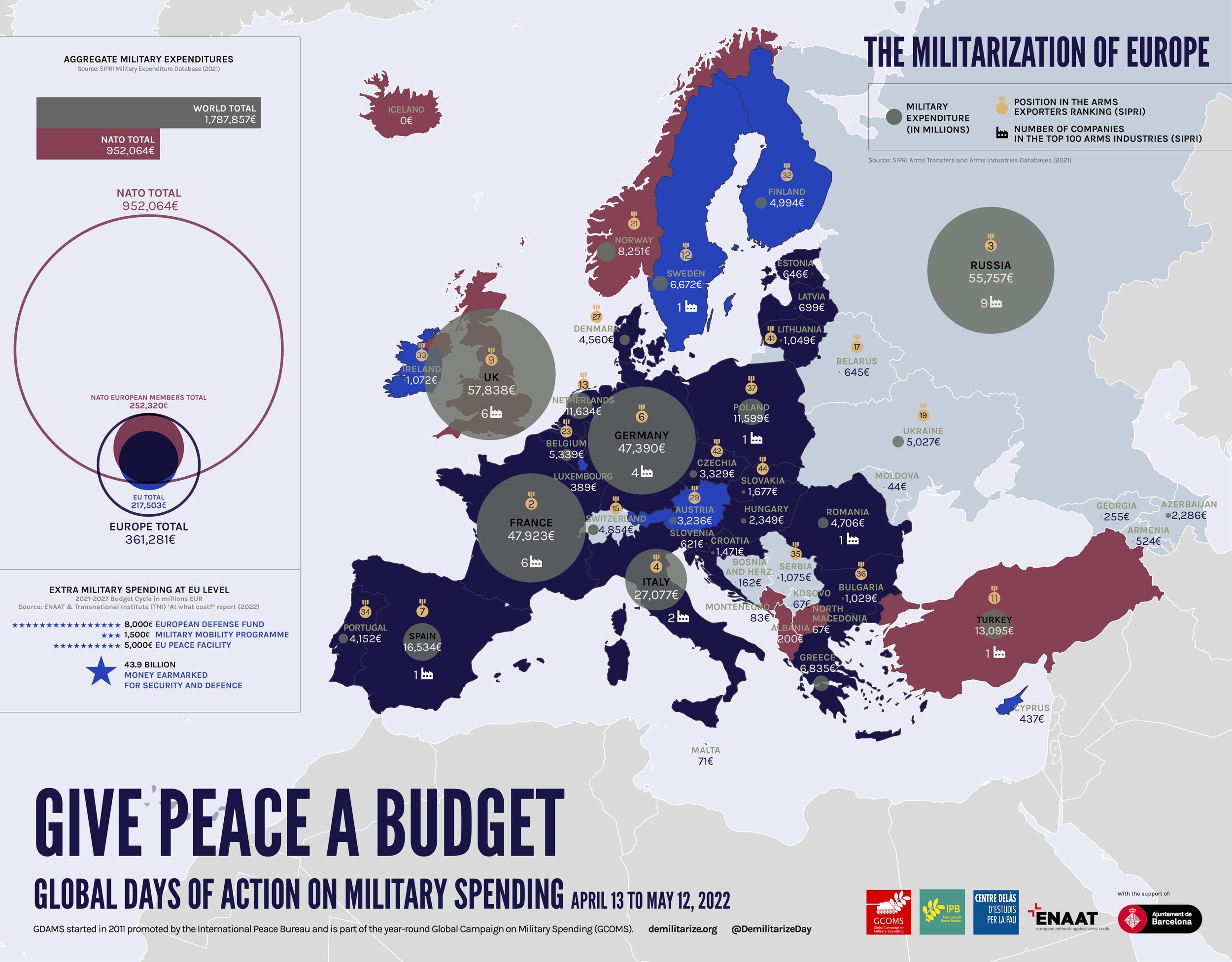-
The Baltic states are strengthening the training of reservists and creating territorial defense systems.
-
Sweden and Finland, after decades of neutrality, have joined NATO and are actively integrating their forces into the broader security architecture.
-
Investments in cybersecurity, AI, and unmanned systems are expanding.
-
Preparations are underway for "next-generation" warfare, where traditional fronts will be combined with cyber and information operations.
-
Particular attention is being paid to air defense systems (for example, the European Sky Shield initiative).
-
Increased tensions: Active militarization could trigger an arms race, especially with Russia, and raise the risk of escalation in local conflicts.
-
Security sovereignty: Europe aims to reduce its dependence on the United States in defense matters, which could alter dynamics within NATO.
-
Economic challenges: Higher defense spending requires the reallocation of resources, which may impact the funding of social programs.
Militarization of Europe: New Trends and Their Consequences

In recent years, Europe has been experiencing a noticeable shift in defense policy. What for a long time seemed to be a zone of stability and pacifism is now becoming a region of active militarization. This process accelerated especially after 2022 amid growing geopolitical threats, a reassessment of security strategies, and changing public opinion.
One of the most striking indicators of militarization has been the sharp increase in military spending:
- Germany announced the creation of a special defense fund worth 100 billion euros, marking the largest investment in the Bundeswehr since World War II.
- Poland increased its defense budget to more than 4% of its GDP, making it one of NATO’s largest military contributors.
- France, the United Kingdom, Sweden, and other EU countries are also steadily increasing their military investments.
This reflects a radical rethinking of priorities, where security takes precedence, even at the expense of social or environmental programs.
Previously, European armies mainly focused on participating in missions outside the continent (for example, in the Middle East or Africa). Now, attention is once again concentrated on defending their own territory:
In addition to the quantitative growth of troops and equipment, Europe is focusing on qualitative rearmament:
A remarkable trend is that militarization no longer provokes as much public resistance as in the past. Fears of threats (primarily from Russia) have radically changed Europeans' attitudes toward military and security issues. Support for increased defense spending in countries like Germany and Sweden has reached record levels.
Thus, the following conclusions can be drawn regarding the possible consequences of Europe's militarization:
Militarization of Europe today is not a temporary phenomenon but a long-term trend. The changes affect not only armies and budgets but also the very perception of security by society. Europe is rapidly preparing for a new world where military power once again becomes a key factor in political stability.
 Latest news
Latest newsGeorgia and the European Union: Transformation of Foreign Policy in the Context of European Integration
11.Dec.2025
Half of Azerbaijanis’ Income Goes to Food: Hidden Causes and Possible Consequences for the Economy
11.Dec.2025
Ukraine on the Threshold of a Political Shift: Updated Peace Plan and Zelensky’s Statement on Readiness for Elections
10.Dec.2025
Russia Proposes New Medal for Evacuating Bodies from Combat Zones
09.Dec.2025
The Shadow of Kadyrov in Yerevan: How a Woman Who Fled Violence Was Killed?
09.Dec.2025
Ukraine is Strengthening its Army amid a Growing Threat
08.Dec.2025
Ukraine Strengthens Its Army Amid Growing Threats
08.Dec.2025
Moscow and Beijing Conduct New Air-Defense Drills: What Lies Behind the Strengthening of Their Joint Shield?
07.Dec.2025
Russia–India: A New Architecture of Partnership. What Stands Behind Putin’s Visit to New Delhi?
06.Dec.2025
The National Security Strategy of Armenia: Analysis of Current Threats and Strategic Approaches
05.Dec.2025

 15 Dec 2025
15 Dec 2025








